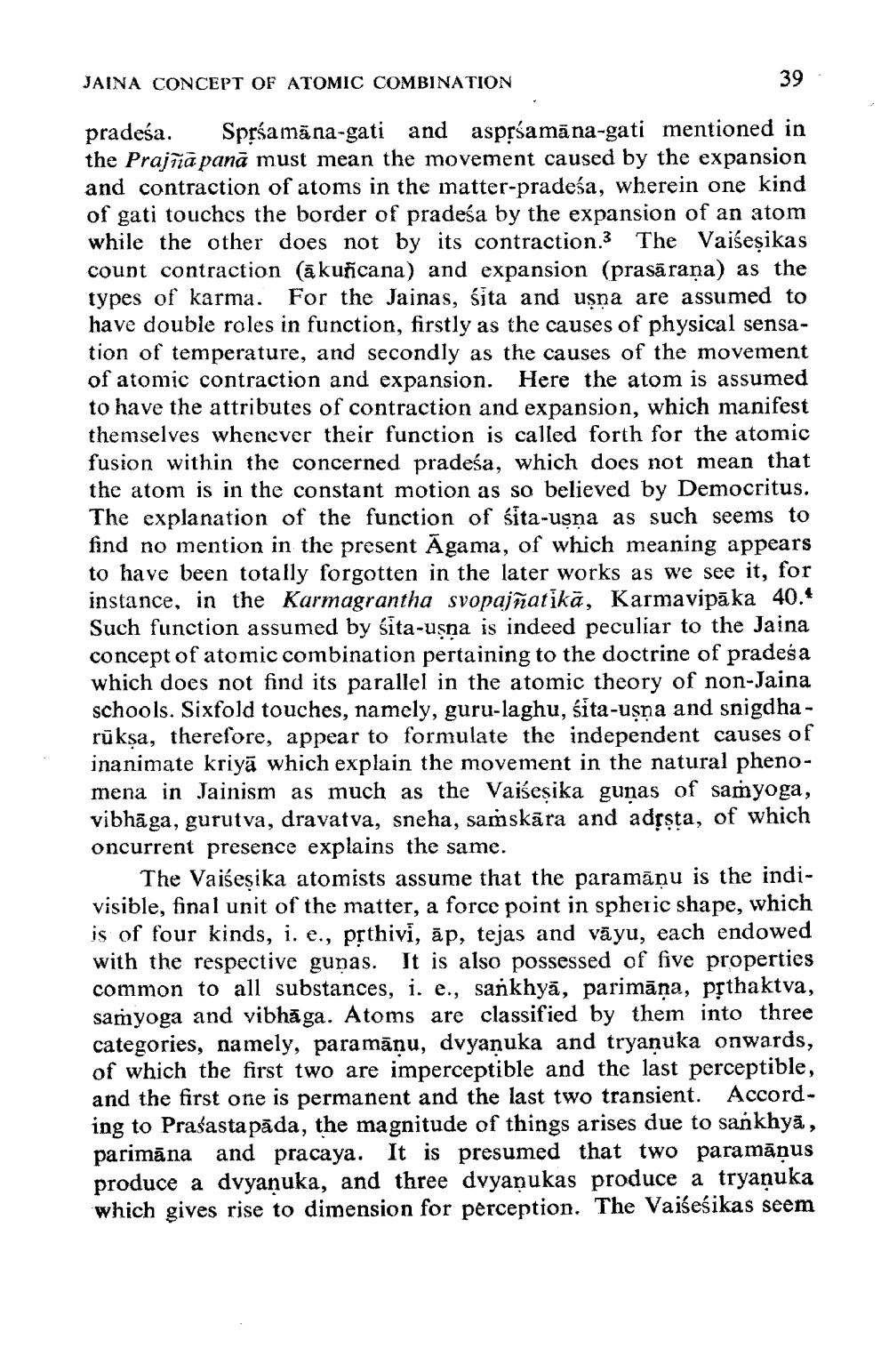________________
JAINA CONCEPT OF ATOMIC COMBINATION
39
pradeśa. Sprśamāna-gati and aspršamāna-gati mentioned in the Prajñā panā must mean the movement caused by the expansion and contraction of atoms in the matter-pradeśa, wherein one kind of gati touches the border of pradeśa by the expansion of an atom while the other does not by its contraction. The Vaiseșikas count contraction (ākuñcana) and expansion (prasāraṇa) as the types of karma. For the Jainas, sita and uşna are assumed to
le roles in function, firstly as the causes of physical sensation of temperature, and secondly as the causes of the movement of atomic contraction and expansion. Here the atom is assumed to have the attributes of contraction and expansion, which manifest themselves whenever their function is called forth for the atomic fusion within the concerned pradeśa, which does not mean that the atom is in the constant motion as so believed by Democritus. The explanation of the function of sita-usna as such seems to find no mention in the present Agama, of which meaning appears to have been totally forgotten in the later works as we see it, for instance, in the Karmagrantha svopajñatikā, Karmavipāka 40.4 Such function assumed by sita-uşna is indeed peculiar to the Jaina concept of atomic combination pertaining to the doctrine of pradeśa which does not find its parallel in the atomic theory of non-Jaina schools. Sixfold touches, namely, guru-laghu, śita-uşna and snigdha - rūkņa, therefore, appear to formulate the independent causes of inanimate kriyā which explain the movement in the natural phenomena in Jainism as much as the Vaišeșika guņas of samyoga, vibhāga, gurutva, dravatva, sneha, saņskāra and adssta, of which oncurrent presence explains the same.
The Vaišesika atomists assume that the paramāņu is the indivisible, final unit of the matter, a force point in spheric shape, which is of four kinds, i. e., prthivi, āp, tejas and vāyu, each endowed with the respective guras. It is also possessed of five properties common to all substances, i. e., sankhyā, parimāņa, přthaktva, samyoga and vibhāga. Atoms are classified by them into three categories, namely, paramāņu, dvyanuka and tryanuka onwards, of which the first two are imperceptible and the last perceptible, and the first one is permanent and the last two transient. According to Prasasta pāda, the magnitude of things arises due to sankhyā , parimāna and pracaya. It is presumed that two paramāņus produce a dvyaņuka, and three dvyanukas produce a tryaņuka which gives rise to dimension for perception. The Vaišeśikas seem




